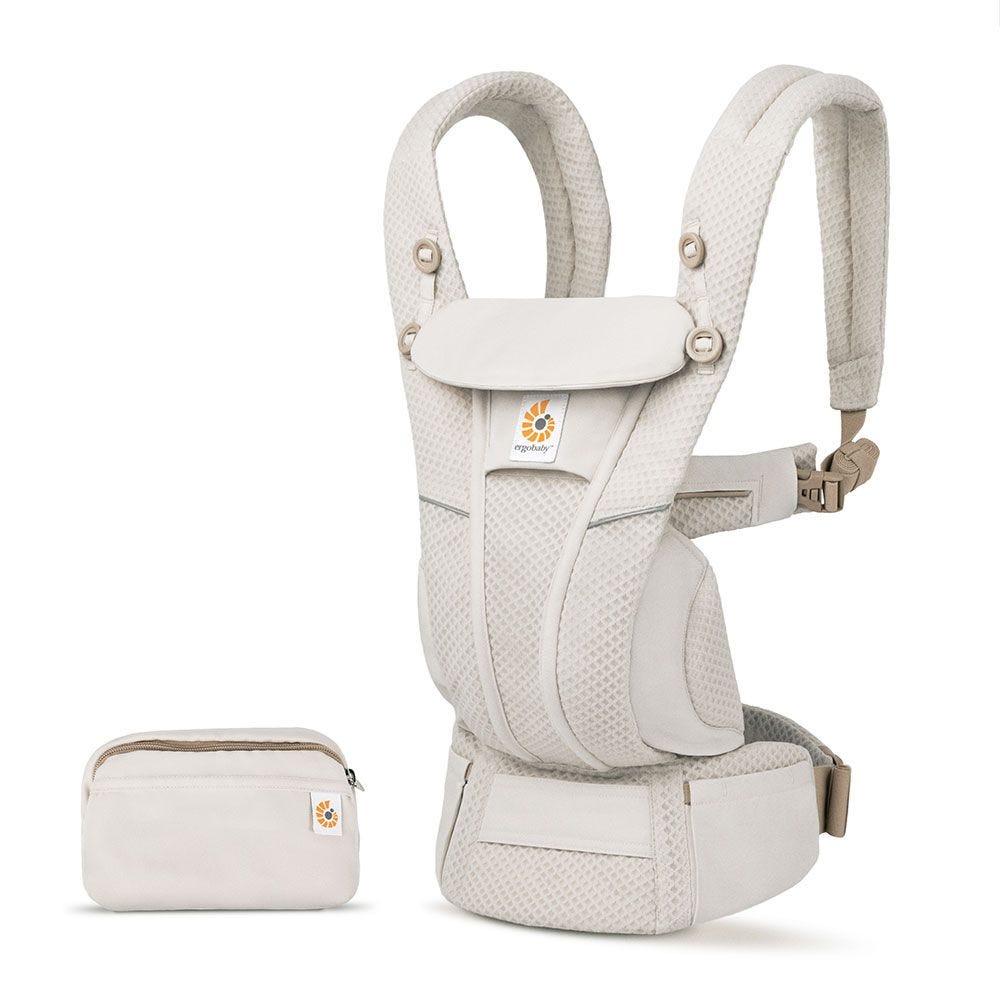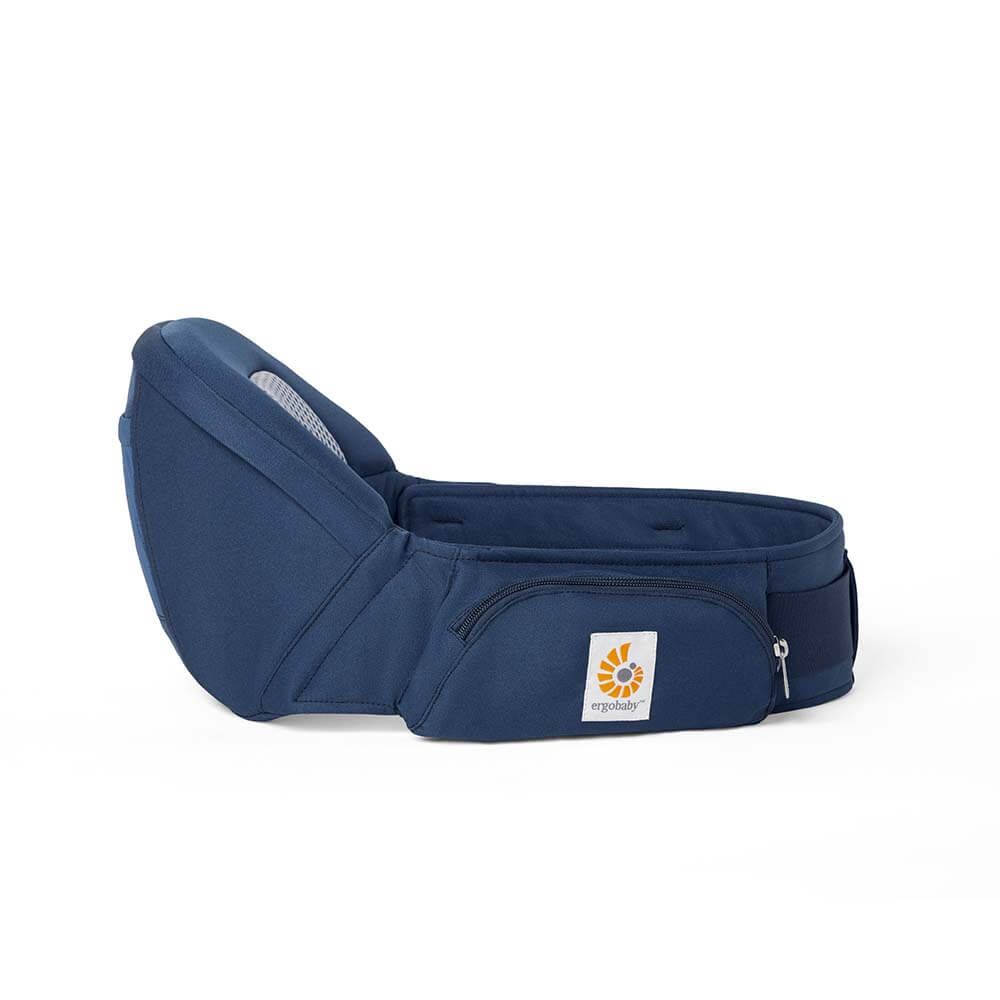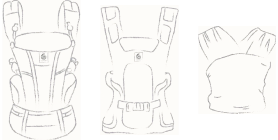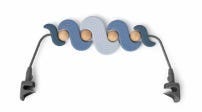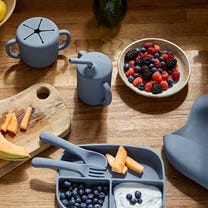How to Express Milk (And Your Milk Storage Guide)
Many parents who embark on a breastfeeding journey come across a breast pump at some point. Whether your feeding journey doesn’t start as you hoped, you want to introduce a bottle, or exclusively pumping is your first choice, having an efficient tool for expressing milk can be very helpful, but navigating the world of pumping can be overwhelming.
Whatever your breastfeeding journey looks like, expressing milk can play a helpful role, especially in the beginning of your feeding journey. To help you feel prepared, here’s what we’ll discuss:
- Why you might want to try expressing milk
- Finding the right breast pump for you
- When to start expressing milk
- Pumping processes and schedules
- How to store your milk
- How to use your milk
- Combining expressing milk and breastfeeding

Why Expressing Milk May Be Necessary:
Beyond the reasons mentioned above, there are various other situations where expressing milk might be necessary, either exclusively, intermittently, or in combination with direct feeding. Here are some common scenarios :
- You want someone else to feed your baby with your own milk.
- Your baby has latching difficulties, either generally or on one side.
- Your baby refuses to feed from you.
- You need to increase the amount of milk you are producing.
- You have given birth to multiples.
- You had a premature birth or have a sick baby.
- You are separated from your baby for medical reasons.
- You have engorgement or mastitis.
- You do not want to breastfeed but would still like your baby to receive human milk.
- You would like to donate milk.
- You need to take medication that prevents you from breastfeeding.
Choosing the Right Breast Pump:
Once you’ve decided to express milk, you need to choose your pump. But which is best? Manual or electric? Double pump set or single pump? It all depends on why you need it, how much milk you want to express, where you want to use it, and for how long. There are two main types of pumps:
Manual Breast Pump:
[caption id="attachment_19253" align="aligncenter" width="769"]

image provided by Lola + Lykke[/caption]
A manual pump is suitable for occasionally expressing milk between feeds. It is portable and doesn’t require electricity, which is nice for on-the-go pumping, but it is not as efficient as its counterpart. Additionally, if you want to express milk briefly on one side at a time and otherwise feed your baby directly, a hand pump works well.
Electric Breast Pump:
The electric pump is often larger and intended for long-term use. If you want to express on both sides and probably over a longer period of time, or even exclusively, then this pump is for you. Pumping milk from both sides at the same time (with a double pump) has several advantages. As a guide, you will obtain 18% more breast milk due to the release of oxytocin, and the breast milk contains 1% more fat. You will also finish expressing more quickly (twice as fast). Check your local breastfeeding support groups, with your doula or midwife, or even your insurance because sometimes pumps are covered by insurance or are available for rent.
 There are two main types of electric pumps: those that plug into the wall, often called “hospital grade” pumps, or those that are battery powered. Both can be available in either single or double flange options, and which one is right for you depends on where you’ll be pumping and how often. For example, hands-free pumps (like Elvis or Willow) are lighter and powered by a rechargeable battery. You can simply wear them in your bra. This makes you more flexible; you are not tied to the bed or sofa, and you can also pump electrically when you are out and about. Some are less powerful than traditional pumps, so you would need to pump more often and for longer to express the same amount of milk, but this is changing as technology advances! It’s worth comparing models to see what might suit you best.
There are also small electric breast pumps that resemble a hand pump. These are particularly practical when traveling, if you only need to express milk occasionally and don’t want to pump manually.
There are two main types of electric pumps: those that plug into the wall, often called “hospital grade” pumps, or those that are battery powered. Both can be available in either single or double flange options, and which one is right for you depends on where you’ll be pumping and how often. For example, hands-free pumps (like Elvis or Willow) are lighter and powered by a rechargeable battery. You can simply wear them in your bra. This makes you more flexible; you are not tied to the bed or sofa, and you can also pump electrically when you are out and about. Some are less powerful than traditional pumps, so you would need to pump more often and for longer to express the same amount of milk, but this is changing as technology advances! It’s worth comparing models to see what might suit you best.
There are also small electric breast pumps that resemble a hand pump. These are particularly practical when traveling, if you only need to express milk occasionally and don’t want to pump manually.
Size Does Matter
Make sure that you get the right flange size! If it is too small, the milk ducts in the nipple will be compressed, and the nipple will not be able to move freely in the suction tunnel. This ultimately damages your nipple and surrounding tissue. If the shield is too large, the milk ducts around the areola are compressed, and too much tissue enters the sucking tunnel. This means you will produce less milk.

When to Start Expressing Milk:
If you’re planning to pump either exclusively or in tandem with direct feeding, in the first few days after birth a transition to expressing with a pump will take place, and manual expression (collection of breast milk by hand) is continued during the first few days in parallel with expressing until milk production has increased significantly. To get your milk production going, it is important to directly feed or pump as early as possible and as much as is possible or necessary. Always start with the minimum suction strength, which is then increased according to your needs. Pumping should never be painful. Exactly how you pump always depends on the situation you are in.
How often should I pump?
If you are exclusively pumping, here is a general suggestion from our friend Katrin, a midwife and breastfeeding expert in the UK:
- Within the first hour after birth, first express colostrum by hand. You should also start pumping within the first six hours after birth.
- In the first 24 hours, pump at least 8 times, preferably 10 times, then up to 12 times in the following 24 hours, including once or twice at night. The decisive factor here is pumping a sufficient quantity of milk. You should allow about 15 minutes for each side. If you pump the milk from both sides one after the other, you will need about 30 minutes. In any case, an oxytocin-stimulating breast massage should be performed before pumping, and pumping should be interrupted by breaks with further massages (to increase the amount of milk).
- Continue with this rhythm until you are producing enough milk after about 14 days, i.e., at least 16-24oz, preferably 25-33oz over the course of 24 hours. Your FIRST priority is your mental health. Give yourself breaks when you need it so you don’t get overwhelmed.
- Once the milk is flowing successfully and sufficiently, you should pump at anywhere from 5-8 times in 24 hours, ideally with a double pump set.
How often should I express when breastfeeding?
 If you only want to express milk on demand, the following applies:
- Depending on your baby’s drinking rhythm, pump for approximately 15 minutes with the double pump set, after feedings or in between. This can help you build up a supply if you’re heading back to work or if you and your partner want to take turns with feeding.
If you only want to express milk on demand, the following applies:
- Depending on your baby’s drinking rhythm, pump for approximately 15 minutes with the double pump set, after feedings or in between. This can help you build up a supply if you’re heading back to work or if you and your partner want to take turns with feeding.
Pumping Correctly: What You Need to Look Out For
Since oxytocin is important for milk production and flow, anything that stimulates the release of oxytocin is helpful when pumping. When breastfeeding, your baby lays warm against you, smell good, and stimulates feelings of love and affection. The following measures also have a supportive effect when expressing milk: a comfortable posture, possibly a nursing bra with holes for the pump so you’re hands free, breast massages, short breaks, being close to your baby, possibly a photo/video of your baby, something that smells like them, a heat pack or warm cloth, and a delicious drink. This stimulates the release of oxytocin much more effectively than continuous pumping over a longer period of time.
To build up and maintain a good quantity of milk and for pain-free pumping, it makes sense to pump in several successive pumping episodes, interspersed with breaks for stimulating massage. This type of pumping is also known as interval pumping or power pumping.
Overall, the important thing to remember is that your well-being is so important. If you are stressed and overwhelmed not only will your family feel it, but it will affect your milk production too. So if you are choosing to breastfeed, pump, or a combination of both, make sure you allow yourself room for adjustments if that’s what's going to be best for you! Take breaks, use formula if that will help your body or mind, and ask for help!
Milk Storage Guidelines:
 In the United States, the Centers for Disease Control and Prevention (CDC) provides guidelines for the storage of breast milk to ensure its safety and quality. Here are the key recommendations:
In the United States, the Centers for Disease Control and Prevention (CDC) provides guidelines for the storage of breast milk to ensure its safety and quality. Here are the key recommendations:
Freshly Expressed or Pumped Milk
- Room Temperature (up to 77°F or 25°C): Up to 4 hours
- Refrigerator (at 40°F or 4°C): Up to 4 days
- Freezer (at 0°F or -18°C or colder): Best up to 6 months, but acceptable up to 12 months
Thawed, Previously Frozen Milk
- Room Temperature: 1-2 hours
- Refrigerator: Up to 1 day (24 hours)
- Never refreeze thawed breast milk.
Milk Left in the Feeding Bottle After a Feeding
- Use within 2 hours after the baby has finished feeding.
General Tips for Storing Breast Milk
- Always use clean containers to store expressed breast milk.
- Label the milk with the date it was expressed to keep track of freshness.
- Store milk in small amounts (2 to 4 ounces) to avoid waste.
- Leave some space at the top of the container when freezing milk, as it expands when frozen.
- If adding freshly expressed milk to already frozen milk, cool the new milk first in the refrigerator before adding it to the frozen container.
How to Warm Breast Milk
- Thaw frozen milk in the refrigerator overnight, or gently warm it by placing the container in a bowl of warm water or holding it under warm running water.
- Never use a microwave to thaw or heat breast milk. Microwaving can destroy nutrients and create hot spots that can burn a baby’s mouth.
- Swirl the milk to mix the fat, which may have separated.
By following these guidelines, you can ensure that your stored breast milk remains safe and nutritious for your baby. For more detailed information, you can visit the CDC's breast milk storage guidelines.

 image provided by Lola + Lykke[/caption]
A manual pump is suitable for occasionally expressing milk between feeds. It is portable and doesn’t require electricity, which is nice for on-the-go pumping, but it is not as efficient as its counterpart. Additionally, if you want to express milk briefly on one side at a time and otherwise feed your baby directly, a hand pump works well.
image provided by Lola + Lykke[/caption]
A manual pump is suitable for occasionally expressing milk between feeds. It is portable and doesn’t require electricity, which is nice for on-the-go pumping, but it is not as efficient as its counterpart. Additionally, if you want to express milk briefly on one side at a time and otherwise feed your baby directly, a hand pump works well.
 There are two main types of electric pumps: those that plug into the wall, often called “hospital grade” pumps, or those that are battery powered. Both can be available in either single or double flange options, and which one is right for you depends on where you’ll be pumping and how often. For example, hands-free pumps (like Elvis or Willow) are lighter and powered by a rechargeable battery. You can simply wear them in your bra. This makes you more flexible; you are not tied to the bed or sofa, and you can also pump electrically when you are out and about. Some are less powerful than traditional pumps, so you would need to pump more often and for longer to express the same amount of milk, but this is changing as technology advances! It’s worth comparing models to see what might suit you best.
There are also small electric breast pumps that resemble a hand pump. These are particularly practical when traveling, if you only need to express milk occasionally and don’t want to pump manually.
There are two main types of electric pumps: those that plug into the wall, often called “hospital grade” pumps, or those that are battery powered. Both can be available in either single or double flange options, and which one is right for you depends on where you’ll be pumping and how often. For example, hands-free pumps (like Elvis or Willow) are lighter and powered by a rechargeable battery. You can simply wear them in your bra. This makes you more flexible; you are not tied to the bed or sofa, and you can also pump electrically when you are out and about. Some are less powerful than traditional pumps, so you would need to pump more often and for longer to express the same amount of milk, but this is changing as technology advances! It’s worth comparing models to see what might suit you best.
There are also small electric breast pumps that resemble a hand pump. These are particularly practical when traveling, if you only need to express milk occasionally and don’t want to pump manually.

 If you only want to express milk on demand, the following applies:
- Depending on your baby’s drinking rhythm, pump for approximately 15 minutes with the double pump set, after feedings or in between. This can help you build up a supply if you’re heading back to work or if you and your partner want to take turns with feeding.
If you only want to express milk on demand, the following applies:
- Depending on your baby’s drinking rhythm, pump for approximately 15 minutes with the double pump set, after feedings or in between. This can help you build up a supply if you’re heading back to work or if you and your partner want to take turns with feeding.
 In the United States, the Centers for Disease Control and Prevention (CDC) provides guidelines for the storage of breast milk to ensure its safety and quality. Here are the key recommendations:
In the United States, the Centers for Disease Control and Prevention (CDC) provides guidelines for the storage of breast milk to ensure its safety and quality. Here are the key recommendations:

